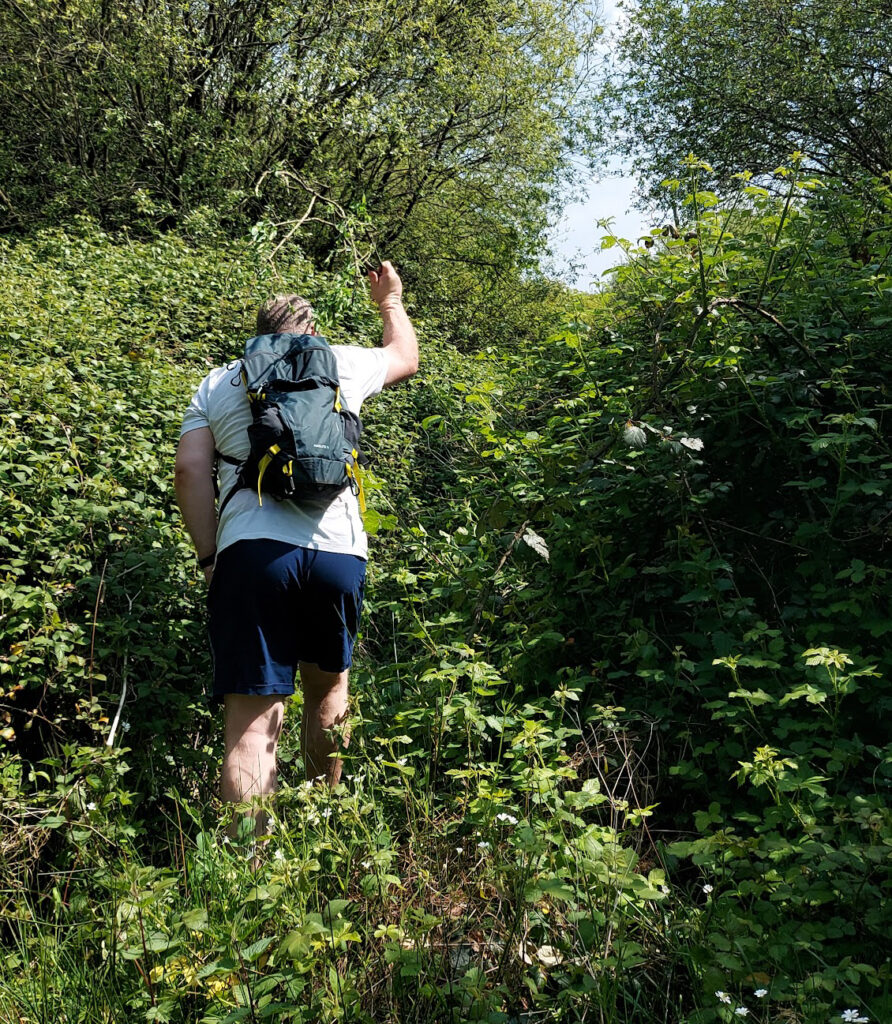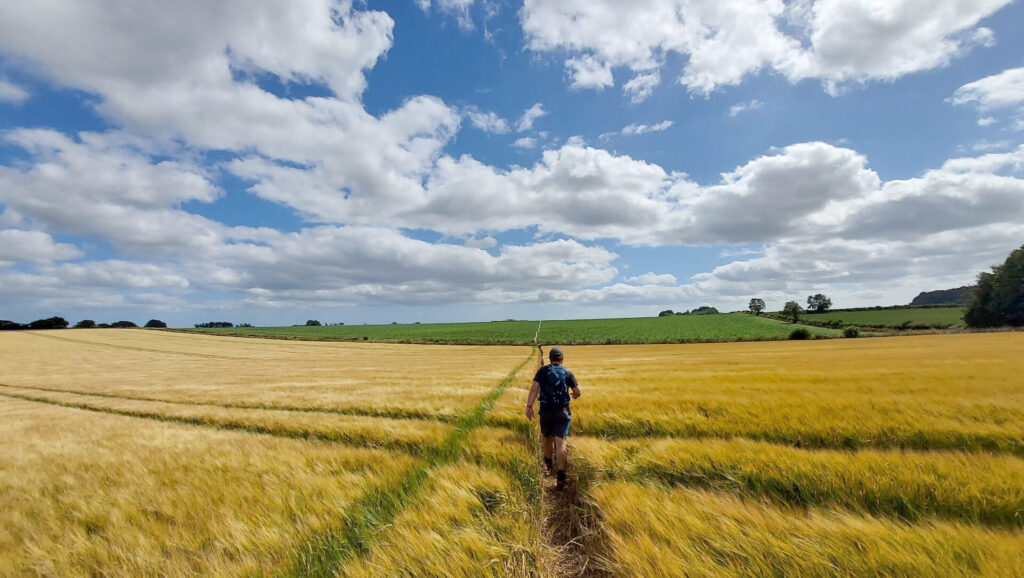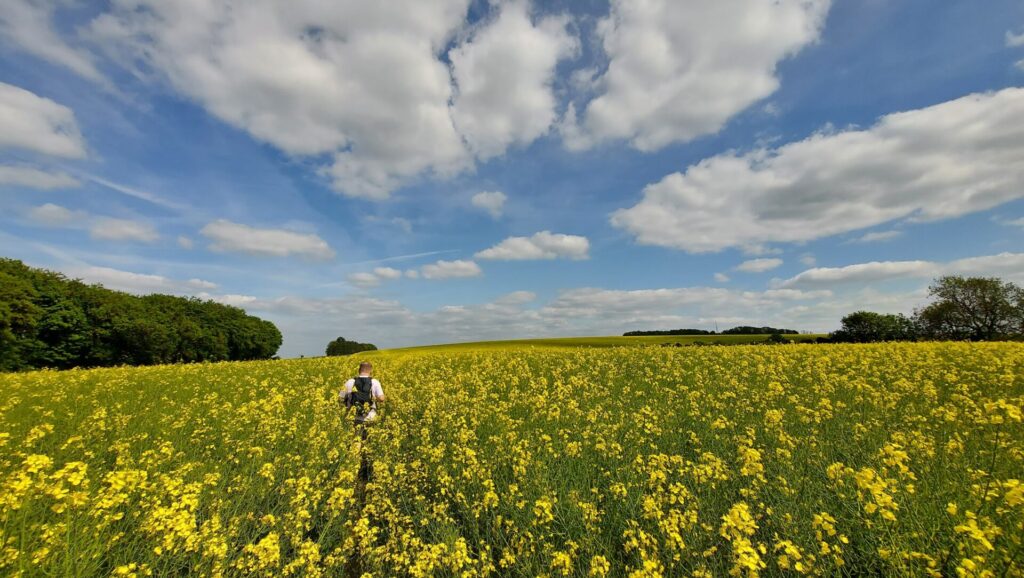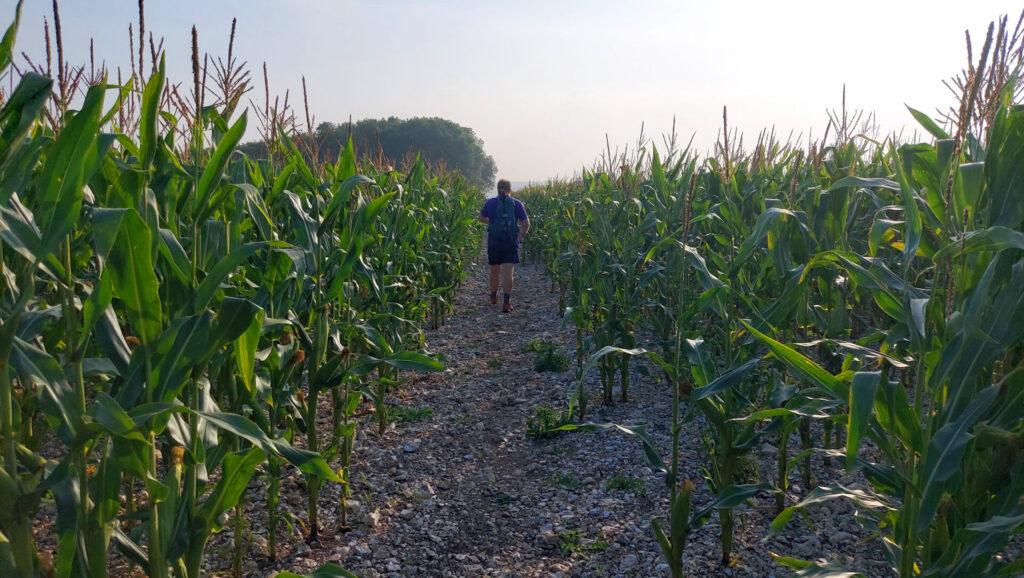My husband looks more like Indiana Jones than a rural dog walker, always armed with secateurs to hack back bully-boy brambles and nettles or to rescue my hair from a tangle of overgrown thorns. What I’d regarded as just an irritating inconvenience became much more alarming when a lovely blind chap we know had his cheek slashed open by head-height brambles overhanging the main footpath into town. His trusty guide dog had no chance of alerting him to that.
Who is responsible? Currently, Dorset County Council is conducting its statutory 10-year review of the Rights of Way Improvement Plan (RoWIP), with the public recently invited to share concerns. The plan sets out management and development of an improved right of way and greenspace network for the next ten years. Dorset’s rights of way network is huge – 4,700 footpaths, 1,700 bridleways and 37 byways, all totalling nearly 3,000 miles in length. A new RoWIP will be drafted this summer, with public consultation on the new plan held between Octpber and December 2024. Rights of Way improvement plan – Dorset Council

This was one of countless footpaths we have encountered this year – it goes directly ahead. When you’re six miles in, you can’t simply turn around – usually this requires sourcing a hefty branch and simply beating our way through, dealing with the stings, the scratches, the hard work and the inevitable delay this entails – Ed
Path protection
Jan Wardell is the Dorset Area Footpath Secretary for Dorset Ramblers, which has over 1,400 members. She welcomes the current consultation. She said: “There is a mixed picture of the state of public rights of way across the county. Generally, in the north west of Dorset and on Portland, footpaths are predominant, whereas in the centre of the county bridleways are prevalent. Footpaths require more maintenance, not least because of the path ‘furniture’ such as stiles.”

When a footpath is defined across a crop correctly, it becomes a joy to walk on. Image – Laura Hitchcock
Founded in 1935, the Ramblers Association has been at the forefront of protecting rights of way. Its aim is to protect and improve paths, both by practical work on the ground and through law. A network of volunteer path maintenance teams and Rambler footpath officers go out in all weathers to keep paths clear, install way markers and replace stiles. Working with landowners and local authorities, they prioritise paths most in need of work. They help claim new paths for walkers and many volunteers campaign on a local level.
Reporting issues
Jan Wardell: “The best way to ensure that public rights of way are kept open is to use them – this helps keep down up-growth on paths. Also be sure to report any problems encountered to Dorset Council.”

Visit http://www.dorset-ramblers. org.uk/rights-of-way/ on how to report path problems to Dorset Council. Jill Crouch, Engineer, Highways Dorset Council advised: “Most Parish and Town Councils have a portfolio holder or a Rights of Way Liaison Officer to whom footpath issues can be reported. You can also use the online service which only takes a couple of minutes and has an interactive map.”
See this facility here https:// mapping.dorsetcouncil.gov.uk/ rightsofway/reportproblem/
Footpaths through farmland are trickier. Jan Wardell explains: “A perennial problem is ‘ploughing and cropping’. If you’ve ever tried to cross a field of maize through which the public right of way has not been re-instated, then you’ll know what I mean!” David George, from the South West National Farmers Union told us: “Farmers recognise the importance of the public rights of way network, especially now when people need to take extra care of their physical and mental health. It’s a landowner’s responsibility to keep rights of way unobstructed and available for use as well as making sure gates and stiles are in good working order.”
He added: “If you’re following a right of way that goes across the middle of a field then you’re entitled to continue along it. If you’re following a marked right of way, bear in mind that this doesn’t necessarily grant you access to the land around it, so if you stray off the path or let your dog run free then technically this could be trespass. Take care to stick to the path; you won’t make yourself popular by trampling over crops. We urge people to follow the Countryside Code.”

Leaving a path through maize is essential – fun and otherwordly when it’s correct, and a miserable battle when it’s not. Image – Laura Hitchcock
If you’re planning a walk and are unsure about your right of access, the Ramblers Organisation has lots of useful hints and explains on the different types of rights of way including off the path in areas known as ‘open access’.
As to the secateurs scenario? The Ramblers Association advises that if you come across a blocked path you’re allowed to cut back as much overgrowth as you need to get by but make sure you’re definitely on a right of way.
I’ll let Indiana know!
What are a landowners responsibilities?
Every walker knows that brambles and nettles soon shoot away in summer if it’s not a well-trodden path, and most are happy to accomodate a little undergrowth. But how much is reasonable for you to be expected to deal with? Farmers or landowners are required:
- to keep rights of way open and useable; this includes providing and maintaining stiles and gates and making sure they are safe and easy to use.
- to cut vegetation that could obstruct the route (at least 3m is required for bridleways and 1.5m for footpaths unless they are crossing a field).
- Paths that run on the field edge must not be cultivated, and cross-field paths must be reinstated correctly after field operations.
You can see the full list here.
by Tracie Beardsley

